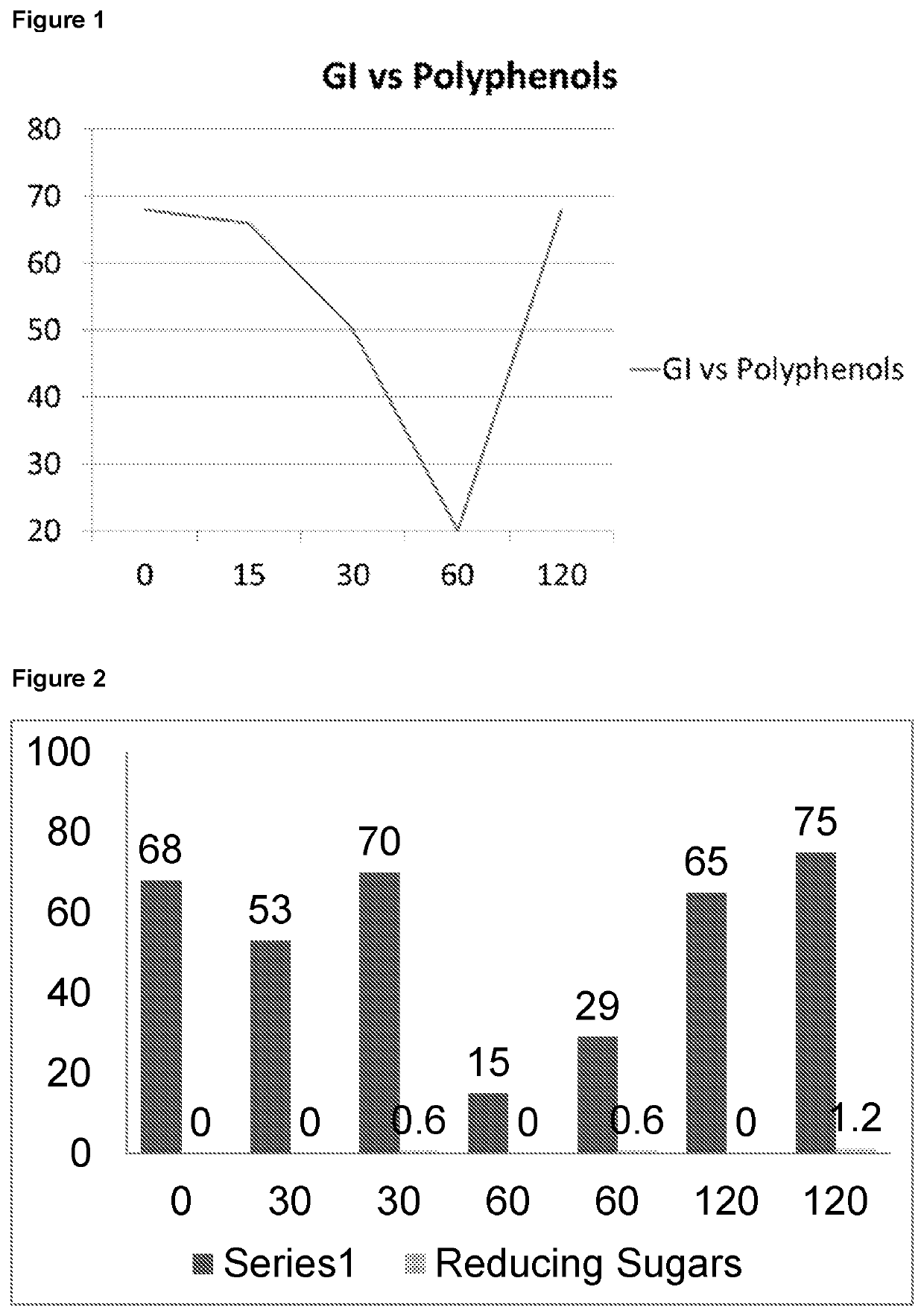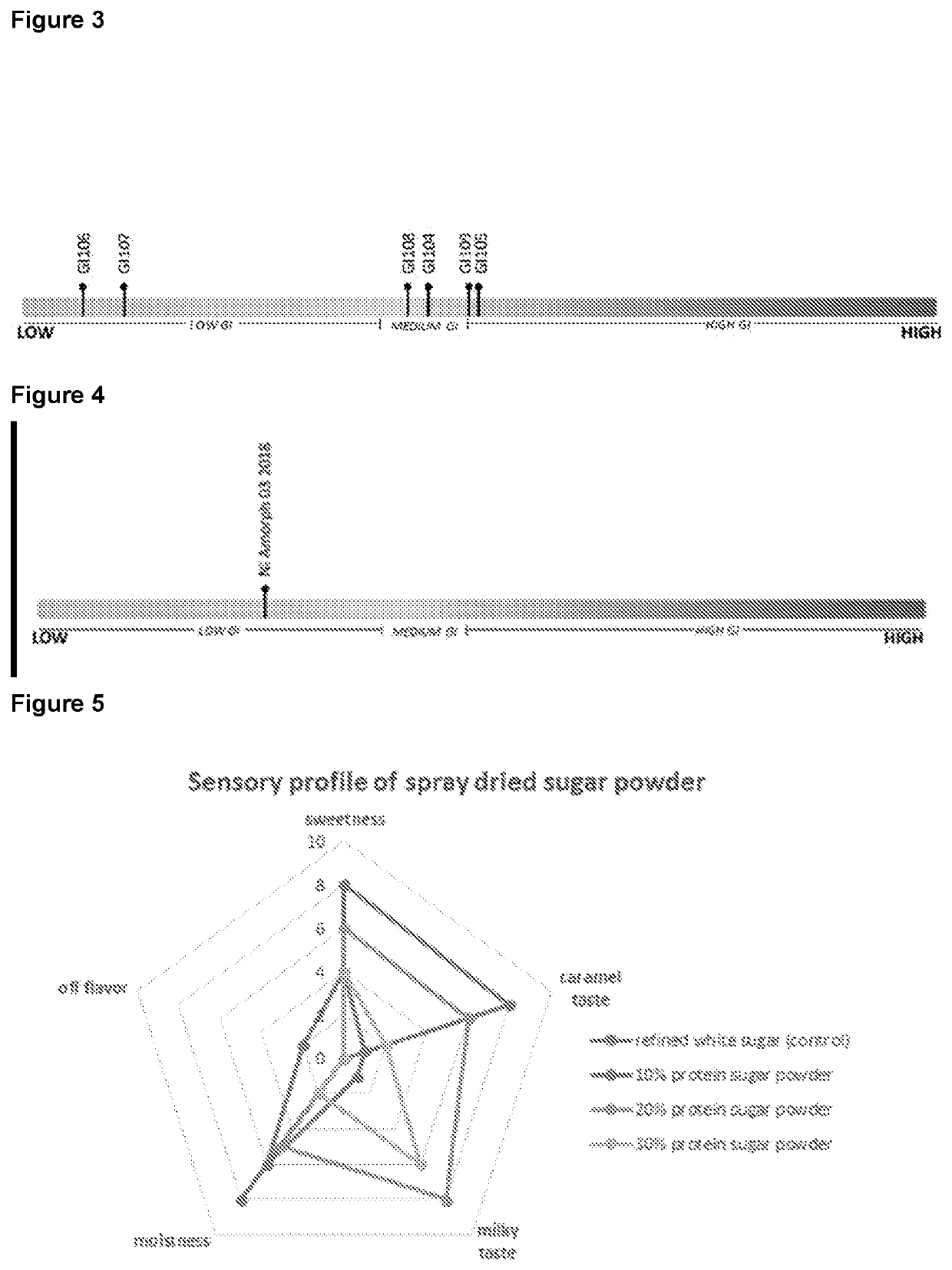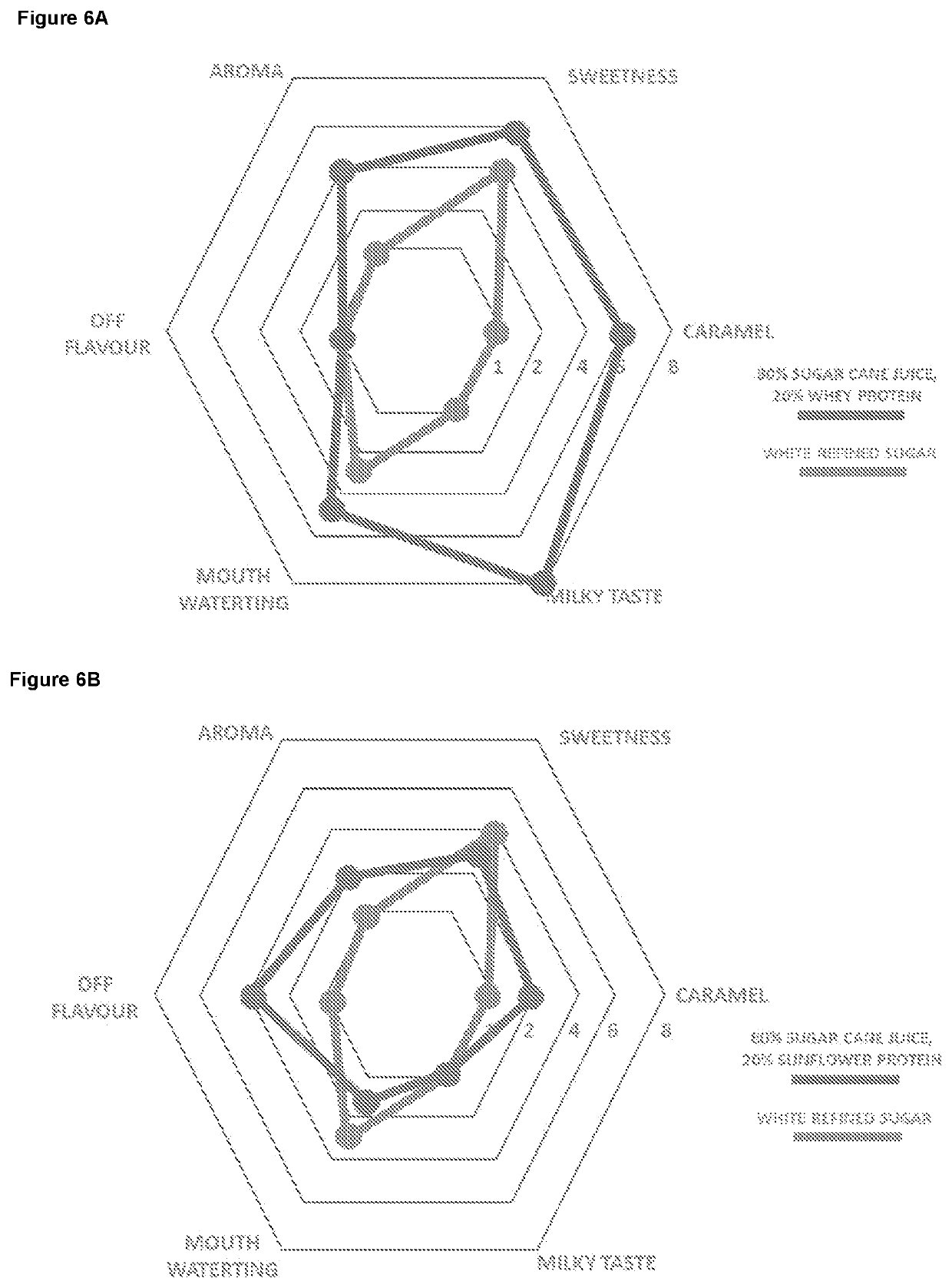Sweetener composition
a technology of sweeteners and compositions, applied in the field of food and beverage sweeteners, can solve problems such as reducing the perception of undesirable aspects, and achieve the effect of reducing perception and high intensity
- Summary
- Abstract
- Description
- Claims
- Application Information
AI Technical Summary
Benefits of technology
Problems solved by technology
Method used
Image
Examples
example 1
f Massecuite to Desired Polyphenol Content
[0220]Ten massecuite samples were prepared at two different sugar mills designated “Mill 1” and “Mill 2”. The polyphenol content of each sample was determined (see Example 2). The massecuite samples were washed until they were the depth of colour that is associated with the desired polyphenol content (ie roughly 500 to 2000 ICUMSA) and the polyphenol content measured. The results are in Table 1 below. The skilled person will understand that if the polyphenol content remains too high after the wash, a second wash is possible. The results for each sample are below. The polyphenol content of several of the samples below is too low. Those samples would have to be discarded. It is usual for some sugars prepared at a sugar mill to not meet specifications for various reasons.
TABLE 1Example sugarsPolyphenol contentMassecuiteLess refined sugarremoved duringpolyphenolspolyphenolsmassecuite washingSample(mg CE / 100 g)(mg CE / 100 g)(mg CE / 100 g)Mill 1 - 1...
example 2
of Polyphenol Content
[0222]40 g of sample was accurately weighed into a 100 ml volumetric flask. Approximately 40 ml of distilled water was added and the flask agitated until the sample was fully dissolved after which the solution was made up to final volume with distilled water. The polyphenol analysis was based on the Folin-Ciocalteu method (Singleton 1965) adapted from the work of Kim et al (2003). In brief, a 50 μL aliquot of appropriately diluted raw sugar solution was added to a test tube followed by 650 μL pf distilled water. A 50 μL aliquot of Folin-Ciocalteu reagent was added to the mixture and shaken. After 5 minutes, 500 μL of 7% Na2CO3 solution was added with mixing. The absorbance at 750 nm was recorded after 90 minutes at room temperature. A standard curve was constructed using standard solutions of catechin (0-250 mg / L). Sample results were expressed as milligrams of catechin equivalent (CE) per 100 g raw sample. The absorbance of each sample sugar was determined and ...
example 3
of the Reducing Sugar Content
[0225]There are several qualitative tests that can be used to determine reducing sugar content in a sample. Copper (II) ions in either aqueous sodium citrate or in aqueous sodium tartrate can be reacted with the sample. The reducing sugars convert the copper(II) to copper(I), which forms a copper(I) oxide precipitate that can be quantified.
[0226]An alternative is to react 3,5-dinitrosalicylic acid with the sample. The reducing sugars will react with this reagent to form 3-amino-5-nitrosalicylic acid. The quantity of 3-amino-5-nitrosalicylic acid can be measured with spectrophotometry and the results used to quantify the amount of reducing sugar present in the sugar product.
PUM
 Login to View More
Login to View More Abstract
Description
Claims
Application Information
 Login to View More
Login to View More - R&D
- Intellectual Property
- Life Sciences
- Materials
- Tech Scout
- Unparalleled Data Quality
- Higher Quality Content
- 60% Fewer Hallucinations
Browse by: Latest US Patents, China's latest patents, Technical Efficacy Thesaurus, Application Domain, Technology Topic, Popular Technical Reports.
© 2025 PatSnap. All rights reserved.Legal|Privacy policy|Modern Slavery Act Transparency Statement|Sitemap|About US| Contact US: help@patsnap.com



